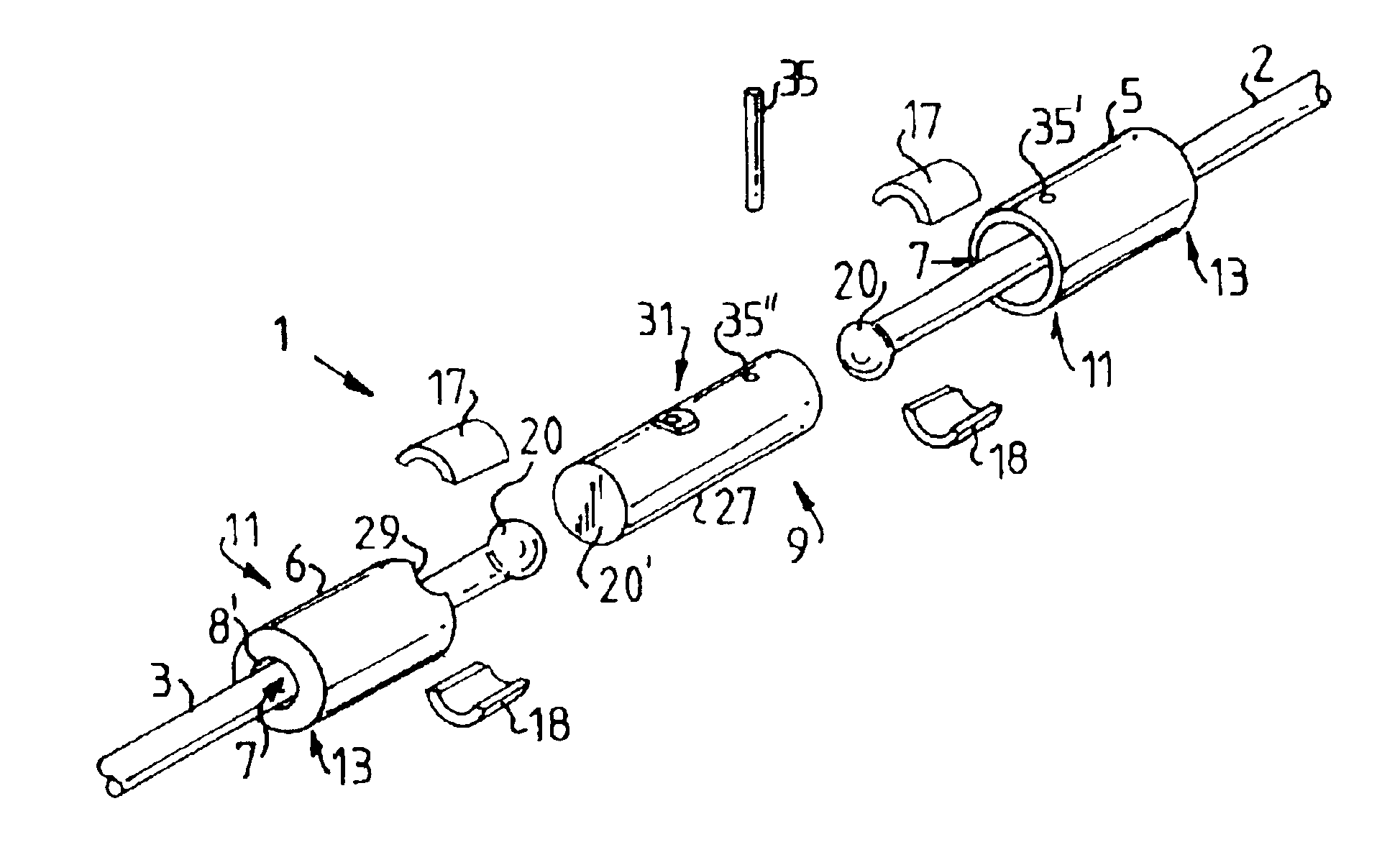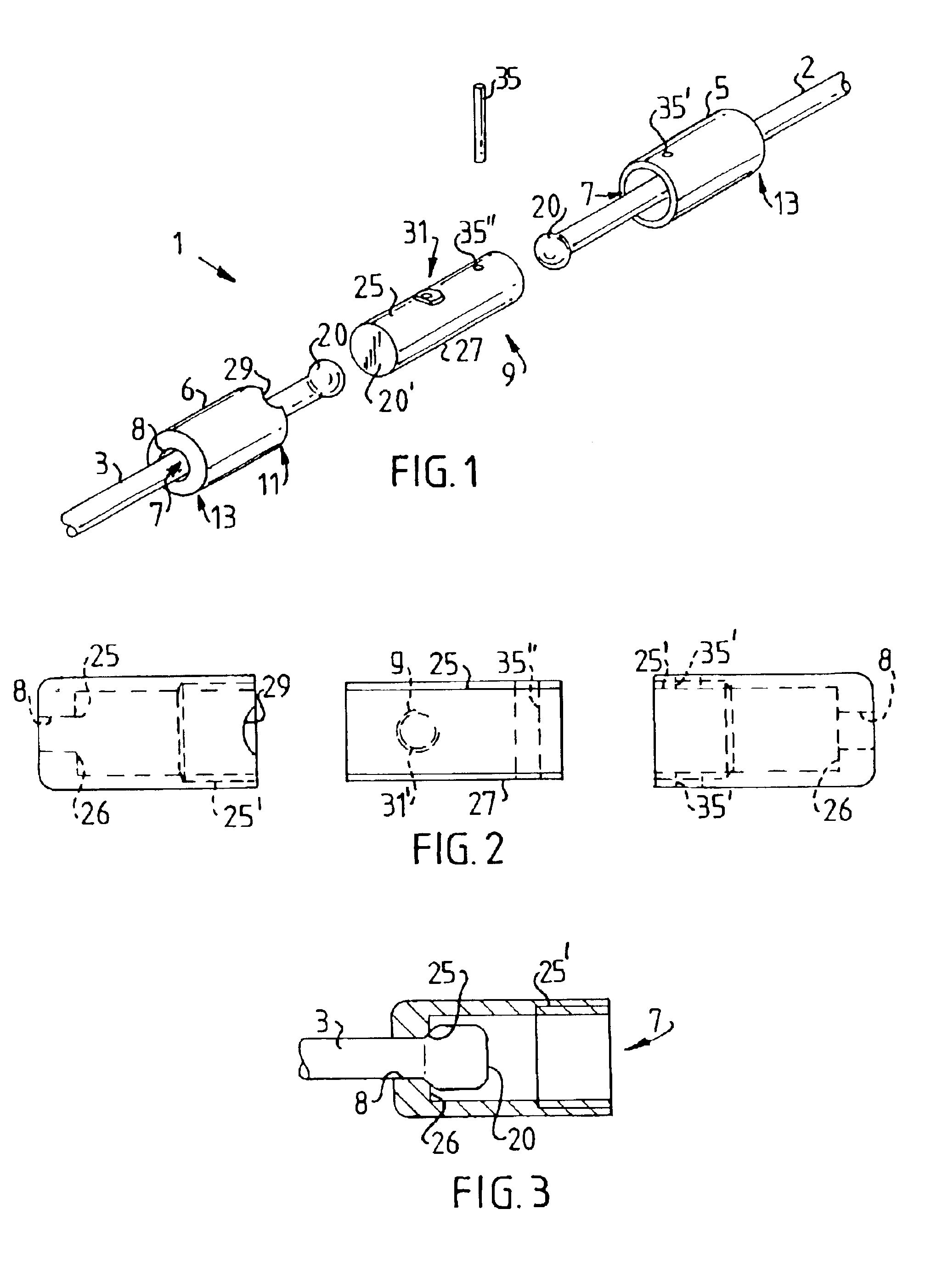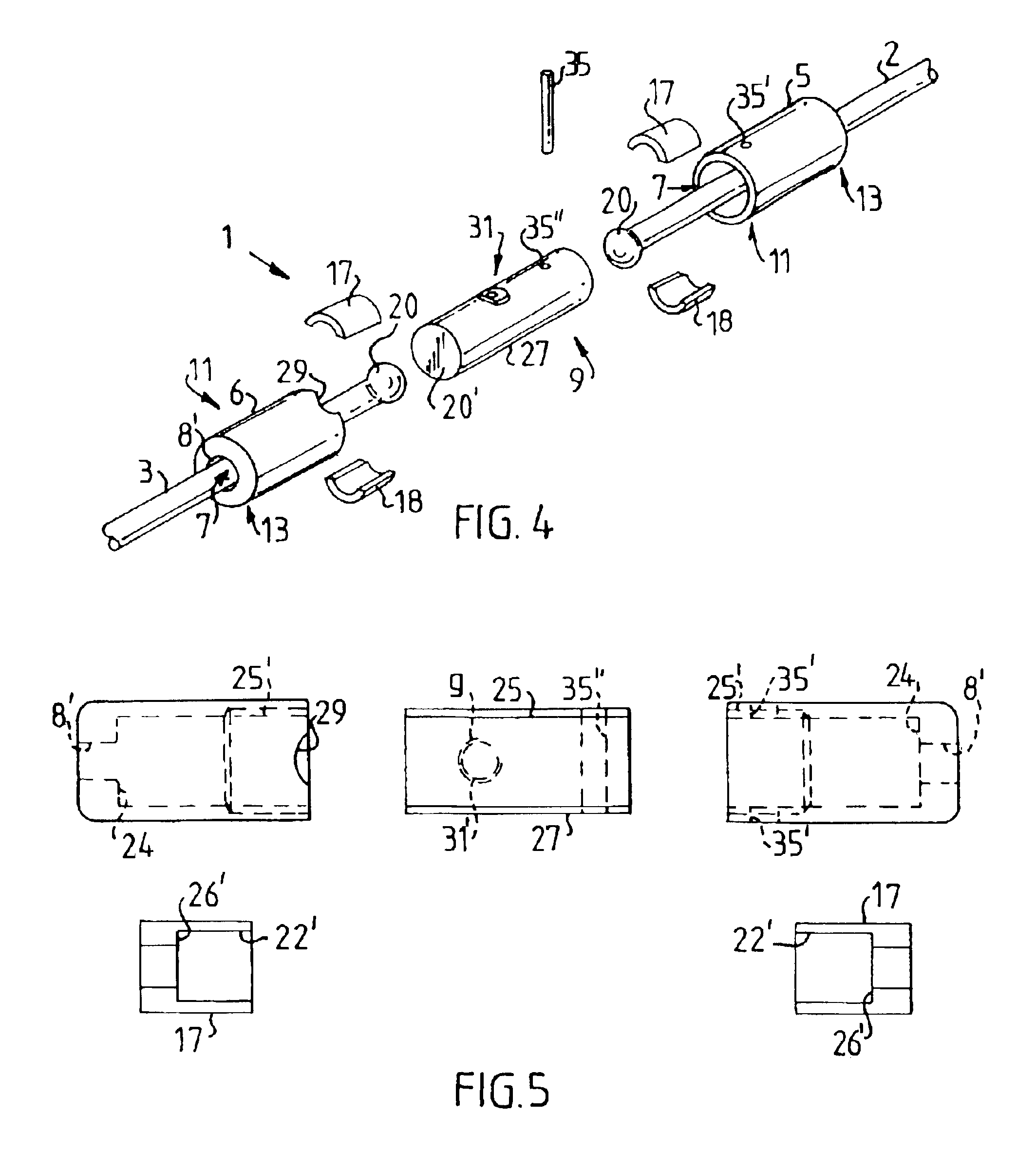Connecting device
a technology of connecting device and connecting rod, which is applied in the direction of connecting rod, rope and cable for vehicles/pulleys, bridges, etc., can solve the problems of high cost, long assembly and dismantling time, and awkward handling
- Summary
- Abstract
- Description
- Claims
- Application Information
AI Technical Summary
Benefits of technology
Problems solved by technology
Method used
Image
Examples
first embodiment
The term "working position" is taken to mean the condition in which the joint casing is fitted and locked between two wire ends. FIG. 1 shows a connecting element 1 according to the invention in a dismantled condition. The connecting element 1 in FIG. 1 is intended to connect a draw wire 2 to a bracing wire 3. The connecting element 1 comprises a first and a second casing body 5 and 6, of which the first casing body 5 is intended to be coupled to the draw wire 2, which during construction is intended to draw a number of bracing wires 3 one at a time into a cable duct (not shown in FIG. 1, shown as 56 in FIG. 9). When the draw wire 2 has been passed through the first casing body 5 the end of the draw wire is upset to form a boss 20. The boss 20 can thus be made of the same material as the bracing wire 3. This has the advantage that there does not need to be any further material on the construction site in order to produce the boss 20. Upsetting is advantageously performed with a roun...
second embodiment
FIG. 6 shows a diagram of a connecting element 1 fitted to a bracing wire 3 and a draw wire 2. The reference numbers occurring in FIGS. 6 and 7 correspond to the reference numbers described and shown earlier, but it must be noted that the connecting element is viewed from a different direction to that shown in FIGS. 3-5. FIG. 6 clearly shows how the bracing wire 3 and the draw wire 2 bear against respective projections 17 and 18 (only 17 is shown in FIGS. 6 and 7, because 18 is obscured). The projections 17 and 18 in turn bear against a shoulder 24.
In the working position the bosses 20 produced at each wire end bear, freely rotatable, against the casing body 5 and 6 by way of the projections 17 and 18, producing an axial locking of each wire end. The number of parts has thus been substantially reduced compared to the prior art, which gives greater operating reliability. Because the wire core or the connecting element is free to rotate, undesirable stresses in the wire are avoided. ...
PUM
 Login to View More
Login to View More Abstract
Description
Claims
Application Information
 Login to View More
Login to View More - R&D
- Intellectual Property
- Life Sciences
- Materials
- Tech Scout
- Unparalleled Data Quality
- Higher Quality Content
- 60% Fewer Hallucinations
Browse by: Latest US Patents, China's latest patents, Technical Efficacy Thesaurus, Application Domain, Technology Topic, Popular Technical Reports.
© 2025 PatSnap. All rights reserved.Legal|Privacy policy|Modern Slavery Act Transparency Statement|Sitemap|About US| Contact US: help@patsnap.com



